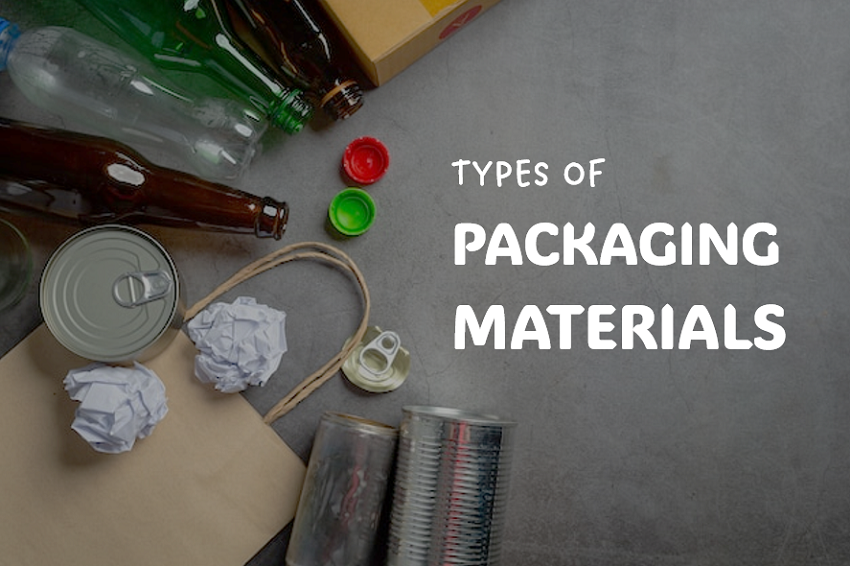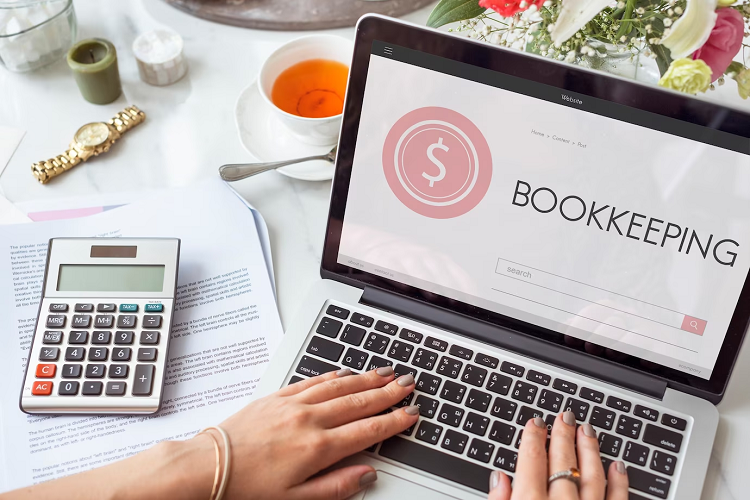Various types of packaging materials have the primary function on the protection, preservation, and carriage of goods. Learning the various kinds of packaging material may assist you in deciding on the most appropriate packaging material for your business or personal use.
Packaging Materials Guide: Different Types
Concerning the packaging material, there are many and they have special advantages and uses. Here is a general overview of different types of packaging materials:
Paper
Paper based products which come under packaging are bags, wraps and labels. It is environmentally friendly as it is commonly produced from recycled material. What you get when you decide to use paper packaging is that it closely relates to being cheap to produce and comes in handy for many products including consumables such as foods and garments.
Types and Uses
- Corrugated Boxes: Employed in transporting and storing items, they ones are preferred since they are strong and resistant.
- Folding Cartons: Often applied for a finished product such as breakfast cereals, toiletries, and drugs among others.
- Paper Bags: Paper superb for perishable food stuffs, food rationales, bottled items and takeout food packaging.
Advantages
- Eco-Friendly: Biodegradable with its raw material coming from naturally renewable resources and can also be recycled.
- Customizable: It can be easily printed and perfectly designed to top up the visibility of the brand.
- Cost-Effective: The common feature with most other types of packaging is that it is relatively cheaper than most other packaging materials.
Packaging papers are the most extensively used packaging material. Moreover, it is inexpensive, portable, and ecologically friendly, which gives them widespread application in uses ranging from food processing and storage to merchandising products.
Cardboard
Cardboard is one of the most commonly utilised materials in packaging. Light in rating as the weight, strong in construction and also degradable that is it can be recycled. It is quite suitable for uses that are related to the transportation industry, in the specific areas of packaging cartons, boxes and other protective packaging.
Types and Uses
- Shipping Boxes: They are familiar boxes primarily when packaging goods to be shipped through various industries. In transportation, they afford protection to the items and guarantee that such products get to customers in good condition.
- Moving Boxes: Cardboard boxes are useful when one has to pack their items for moving from one house to the other as they are cheaper to acquire and use.
- Food Packaging: Cardboard is known as sustainable food packaging and utilised in cereal boxes, pizza boxes, and takeout boxes. It is a safe and hygienic substrate that has the possibility of a resealable print with the nutritional information and brands.
- Protective Packaging: Cardboards are used in making insertions and separations as well as the paddings used in packaging delicate items.
Advantages
- Cost-effective: Cardboard boxes are cheaper in the market than other packaging media available in the market.
- Versatility: The boxes made out of cardboard are one that comes in different sizes and shapes to the extent that they can be used in packaging of many products.
- Strength and Durability: These boxes are very hard and normally do not collapse thereby offering a strong shelter to the products during transportation and storing.
- Eco-friendly: Cardboard boxes can be recycled and reused, reducing waste and environmental impact.
- Lightweight: These boxes are fragile and extremely light in weight. This can be quite beneficial in eliminating the expenses of having to ship, as well as in making managing and handling significantly easier.
Tin cans are preferred more than other types of packaging materials because they are biodegradable and recyclable, especially cardboard. Kinds are kraft paper, corrugated cardboard and coated paper. They are used in packaging such as in, boxes, bags, and wrapping materials.
Although paper and cardboards are more biodegradable than plastics, while preparing the paper and cardboards, there is cutting of trees, huge water and energy consumption. However, the former influences have been exacerbated by such factors as increased production of waste materials, whilst the latter have been erased due to the technological improvement in the recycling industry.
Plastic
Polyethylene is widely used in plastic packaging since it is hard wearing and can be manufactured in flexible forms. It applies to the making of bottles, bags, and the film wraps too. PE is also adopted in different types of uses mainly because it is lightweight and does not permit moisture to penetrate it common in the packing of foods and beverages.
It is a known fact that plastic is a unique packaging material which is used in many industries as it is generally considered to be very strong. Due to these characteristics, the material is ideal for products including, but not limited to, foods and beverages, electronics, and medical products.
Types and Uses
Polyethylene Terephthalate (PET): They are widely employed in industries that produce bottles for soft and alcoholic drinks as well as containers for foods.
- High-Density Polyethylene (HDPE): It is used in milk jugs, detergent bottles and plastic bags.
- Polyvinyl Chloride (PVC): It is best utilised in blister packs, shrink wraps, and medicals.
- Polypropylene (PP): Applied to the Yogurt cup, bottle lids, microwave jar, etc.
Advantages
- Durability: Shock and waterproof hence guarantees the products safety.
- Versatility: There are different types of foam including rigid and flexible foam.
- Transparency: Enables products to be easily seen thus raising their appeal to the customers.
This is mainly because the plastic packaging is very versatile, light, and economically efficient. Forms of plastics that are used in packaging include the polyethylene, polypropylene, polyvinyl chloride, polyethylene terephthalate, and the polystyrene. They have characteristics that differentiate them and make them fit specific uses.
Currently, plastic packaging is used in the manufacturing sector prominently in food & beverage, pharmaceuticals, cosmetics, and electronics sectors. It can easily be processed into several shapes and sizes and this makes it applicable in many products.
Another commonly known kind of plastic is polypropylene. It has a high melting point, this makes it ideal for the packaging of products that must be sterilised. PP commonly used in containers, caps and microwave safe packing.
Glass
Glass is an OD safe and recyclable packaging material that does not come into contact with food or drink substances. It is applied on jars, bottles and any contaminants. Glass containers and jars are excellent at protecting from the invasion of moisture and air, thus retaining the quality and taste of the products.
Glass is the most preferred and popular packaging material due to its characteristic features such as; it is strong, transparent, and completely watertight. This is especially applied in the production of soft drinks, drugs and quality moisturisers.
Types and Uses
- Bottles: Applied to be used in taking of alcohol containing fluids such as wine, beer, and spirits.
- Jars: For products such as jams, sauces and pickles they are ideal.
- Vials: Often applied in the medicine production and storage including vaccines and other highly sensitive pharmaceutical products.
Advantages
- Non-Reactive: Is not influenced by the contents in order to produce the products with the high quality.
- Reusable and Recyclable: Unlike disposable plates which are only used once and then disposed of, reusable plates are those that can be used severally and must be recycled throughout without fading off.
- Premium Appeal: Gives a refined appearance that helps in improving the cosmetic attraction of the products.
One of the prominent advantages of glass is the absence of reactivity with the stored products and absolutely safe material for storing the food and beverages. Not only that it is also fully recyclable. Nevertheless, glass is a weighty and a delicate material; it will enhance the cost of transport and vulnerability to cracking.
Bottles for beer, wines, juices, especially wine bottles and jars for sauces, creams, and small containers for pharmaceuticals are some of the uses of glass packaging.
Metal
The products that are made of a metal such as Aluminium and steel since such commodities are strong, durable, and protect the contents. It is used on a large scale in some of the following fields; the food and beverages industry, and the drug industry.
Types and Uses
- Aluminium: Aluminium is used for beverages cans and foils and for trays. It is light, rust proof and offers secluding protection against light, oxygen and moisture. It is also desirable that the aluminium packaging is recyclable further enhancing the characteristic of this material.
- Steel: For strength and durability perspective steel packaging cannot be overemphasised. In cans, drums and Bottle caps steel offers durability and shield products. It is most suitable in packing commodities that will stay for a long term such as canned foods and industrial products.
- Foil Pouches: Cost wise, foil pouches are generally cheaper to many of the leading mainstream packaging types. These are widely applied in the fields of food, medical, cosmetic and industrial products production.
Advantages
- Strength and Durability: Offers very good physical resistance to shocks.
- Barrier Properties: Provides the best barrier against light, moisture, and air than other common substituents.
- Recyclability: It is worth noting that while aluminium and steel alloys are two different categories of metal, in many ways both types of metal are very highly recyclable.
Aluminium usage is quite insightful as aluminium is relatively lighter, chemical reactive and perfect for holding beverages, canned foods and many other products. Canned products and aerosols utilise steel and technology that are familiarly referred to as tinplate.
Metal packaging is strong, shatters and tears do not pass through it and it is an environment friendly product as it is recyclable. However, it is more energy consuming in manufacture and sometimes costs more than other products of construction.
Wood
Wood is a common packaging material and has been widely used because of its torsion strength and the cosmetic look of natural timber. It is employed in many uses such as in the construction of pallets and shipping boxes and in luxury packaging.
Types and Uses
- Wooden Crates: It is used in the transport of massive and sensitive products.
- Pallets: Critically needed for large-scale transfers of goods and material and for use in inventory storage facilities.
- Luxury Boxes: Includes wines, spirits, and gifts that may be associated with the product category because of the price range.
Advantages
- Strength and Stability: Furnishes very good support & defence to very weighty objects and articles.
- Natural Aesthetic: Advantages include: giving out a rather ‘posh and green’ look.
- Reusable: Since they can be used multiple times, in many cases they prove less dangerous to the environment.
Principal applications of wood in packaging are wooden cases, pallets, airborne, cartons, and dividers. These packaging solutions are applied across different industries such as agriculture, manufacturing industries, automobile industries, and shipping industries.
Due to this, the following aspects must be taken into account before selecting the packaging material; the product’s needs, the need to transport the packaged goods and interactions with the environment. This material can be very suitable for packaging since it is hard, usable in various types of packaging, and biodegradable.
Textiles
Non-woven packaging embraces additional items such as textile fabrics in the form of cloth which may be coconut, cotton, jute or even the artificial ones. These materials are applied on bags, pouches as well as wraps hence making the packaging material to be soft and flexible.
Types and Uses
- Cotton Bags: They employ them for buying food stuff, cloths and even those items to be labelled and sold to the consumers.
- Jute Sacks: Common most of all in the coating of grains and beans used in the agriculture trade business.
- Synthetic Fabric Pouches: Today, they are used, for instance, for electronics, cosmetics, jewels, and other minor types of value.
Advantages
- Eco-Friendly Options: Cotton and jute are two natural fibres which are as a material for making textile and these are eco-friendly which implies that these are biodegradable.
- Durability: It is also very durable and it is rather hard to tear and this makes the formation of good protection possible.
- Customizability: It is easy to print since they are utilised to place more emphasis on the brands.
Packaging fabrics can be natural fabrics such as cotton, flax and jute or synthetic fabrics such as polypropylene fabric. This versatility increases the level of strength, durability as well as the flexibility to meet various packaging requirements.
This plays the role of offering protection to the packaged items from getting damaged through offering support or through shock absorption during transportation and handling. They can protect valuable or damage sensitive equipment, substances, components or mechanical parts from being scratched or broken. Textiles possess diverse colour, touch and feel hence the possibility of coming up with attractive packaging.
Biodegradable
Biodegradable packaging entails packaging materials that can primarily degrade in the environment and return to nature in the shortest time possible. Here are some uses and advantages of biodegradable packaging:Here are some uses and advantages of biodegradable packaging:
Types and Uses
- Food Packaging: Food packaging can be in biodegradable material, for instance, compostable paper or cellulose based packaging.
- Retail Packaging: There are numerous applications of biodegradable material in retail packaging such as bags, box and wrapping material.
- Shipping and Mail Packaging: Shipped products or mailed items can use eco friendly bubble wrap or compostable mailer.
- Industrial Packaging: It can be used in industrial packing like packing of electronic products, machine parts or any fragile products.
Advantages
- Environmental Impact: It can minimise their effects on the environment hence leading to the conservation of the environment.
- Reduced Dependency on Fossil Fuels: These are products that are made from renewable resources. This cuts down the use of fossil fuels commonly used to produce the conventional plastics.
- Versatility: It can be designed to have similar characteristics to regular plastics for example; strength, flexibility and barrier characteristics.
- Consumer Perception: Products which are sensitive towards the environment are much more preferred by the consumers because of their awareness of the environment.
Some of the packaging products on the market include biodegradable products found to be friendly in the environment. Such materials are often biodegradable in that the decomposition does not result in toxic byproducts. They include bioplastics, paper-based and plant based packaging.
Biodegradable materials can be disintegrated into simple elements that are familiar to nature with the help of microbes such as bacteria and fungi. Nevertheless, the usage of the term ‘biodegradable’ is uncontrolled, and there are no definite deadlines for biodegradation.
Conclusion
Selecting the right packaging material online is key to ensuring your products do not get damaged while at the same time being environmentally friendly. In this environment it is very essential to gain comprehensive knowledge on the general characteristics of different types of packaging material and what their respective advantages are so that one can make his or her decision without compromising on the set principles of sustainability.












